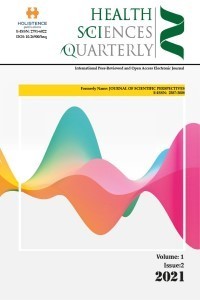SEED STRUCTURE AND EMBRYO DEVELOPMENT OF SESELI RESINOSUM (APIACEAE)
The male and female gametophyte development in Seseli resinosum Freyn et Sint were studied with a-light microscope. In order to study the embryology of Seseli resinosum Freyn & Synth that an endemic plant spreading in Zonguldak-Bartin region development of the seed and embryo have been examined. Embryo development of Seseli resinosum was solanad type. In the sections taken zygote, proembryo, 4-cell embryo, 8-cell embryo, spherical embryo, heart-shaped embryo stages were observed. There are differences in the participation of the integument in the formation of the testa. In Apiaceae, only the epidermis of the outer integument forms the seed coat. Since the fruit type is a schizocarp, the testa and the pericarp are inseparable. Testa was seen as 3 or 6 layers. The layers consist of thin-walled cells. The outermost layer is single row and its thickness is less than the other layers.
Anahtar Kelimeler:
Seseli resinosum, Apiaceae, Seed structure, Embryo development
SEED STRUCTURE AND EMBRYO DEVELOPMENT OF SESELI RESINOSUM (APIACEAE)
The male and female gametophyte development in Seseli resinosum Freyn et Sint were studied with a-light microscope. In order to study the embryology of Seseli resinosum Freyn & Synth that an endemic plant spreading in Zonguldak-Bartin region development of the seed and embryo have been examined. Embryo development of Seseli resinosum was solanad type. In the sections taken zygote, proembryo, 4-cell embryo, 8-cell embryo, spherical embryo, heart-shaped embryo stages were observed. There are differences in the participation of the integument in the formation of the testa. In Apiaceae, only the epidermis of the outer integument forms the seed coat. Since the fruit type is a schizocarp, the testa and the pericarp are inseparable. Testa was seen as 3 or 6 layers. The layers consist of thin-walled cells. The outermost layer is single row and its thickness is less than the other layers.
Keywords:
Seseli resinosum, Apiaceae, Seed structure, Embryo development,
___
- [1] Meena S, Chaudhary, FM., Bhatty, MK. 1989. Antimicrobial Activity of The Essential Oils of Umbelliferae Family, Part VIII. Seseli libanotis, Ligusticum stewartii and Pycnocycla aucheriana Oils. Pakistan J. Sci. Ind. R. 32: 316-319.
- [2] Doğan Güner E, DumanH, Pınar NM. 2011. Pollen morphology of the genus Seseli L. (Umbelliferae) in Turkey. Tr. J. Bot. 35: 175-182.
- [3] Davis PH. 1988. Flora of Turkey and the East Aegean Islands (suppl. 1), pp. 317-551. Edinburgh: Edinburgh University Press.
- [4] Duman H. 2000. Seseli L. In: Guner A, Ozhatay N, Ekim T, Başer KHC (eds.). Flora of Turkey and the East Aegean Islands (suppl. 2), p. 141. Edinburgh: Edinburgh University Press.
- [5] Ekim, T., M. Koyuncu, M. Vural, H. Duman, Z. Aytaç and N. Adıgüzel. 2000. Türkiye Bitkileri Kırmızı Kitabı Eğrelti ve Tohumlu Bitkiler. Ankara: Barışcan Ofset.
- [6] Jurica HS. 1922. A morphological study of the Umbelliferae. Bot. Gaz. 74: 292-307.
- [7] He S, Tan D. 2011. Embryology of Ferula sinkiangensis (Apiaceae). Acta Botanica Boreali-Occidentalia Sinica 3: 439-445.
- [8] Sehgal CB. 1965. The embryology of Cuminum cyminum L. and Trachyspermum ammi(L.) Sprague (Carom copticum Clarke.). Biological Sciences 31: 175-201.
- [9] Johensen DA. 1940. Plant Microtechnique McGraw. Hill New York.
- [10] Davis GL. 1966. Systematic Embryology of Angiosperms. JohnWiley and Sons, Inc., New York, 528 p
- [11] Langeron M.1946. Precis de Microscopie. Paris, 1265 s.
- [12] Ünal M. 2006. Bitki Angiosperm Embriyolojisi, Nobel Yayın Dağıtım, 270 s.
- Başlangıç: 2017
- Yayıncı: Holistence Publications
Sayıdaki Diğer Makaleler
ON SOME BULLEN-TYPE INEQUALITIES VIA CONFORMABLE FRACTIONAL INTEGRALS
Cihan TURHAN, Filiz BAL KOÇYİĞİT, Merter Acar ZİNKÇİ, Miromid SAYESTHNOM
RESEARCH ABOUT VISITOR PERCEPTIONS OF ÇANAKKALE MARTYRS’ MEMORIAL
SEED STRUCTURE AND EMBRYO DEVELOPMENT OF SESELI RESINOSUM (APIACEAE)
VOLTAMMETRIC AND CHROMATOGRAPHIC DETERMINATION OF NAPROXEN IN DRUG FORMULATION
Suzan Yanik YANIK, Selehattin YILMAZ, Gülsen SAGLIKOGLU, Murat SADIKOGLU, Özlem TONGUC YAYINTAS
THE EFFECT OF NUMBER OF WALLS WITH DIFFERENT THICKNESS ON THE PROPERTIES OF THE POLYCARBONATE PANELS
